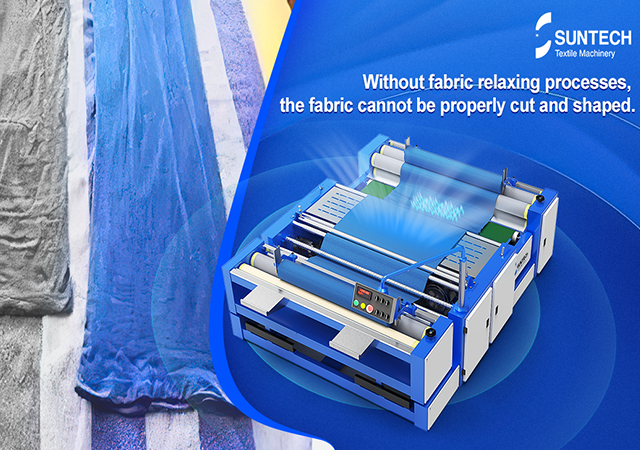The garment industry is a highly competitive sector where manufacturers need to produce high-quality products quickly and efficiently. One of the critical steps in garment manufacturing is the relaxation of fabric. Fabric relaxing machines are essential tools in the textile industry that help manufacturers achieve the desired fabric properties and dimensions.
These machines provide controlled and uniform relaxation of fabrics, ensuring that the fabric is free from tension and wrinkles. In this blog post, we will explore the fabric relaxing machine and its role in the garment industry. We will discuss how these machines work, the benefits they offer, and the different types available in the market. So, whether you are a textile manufacturer or a fashion enthusiast, read on to discover the importance of fabric relaxation and how these machines can help improve your production process.
What is Fabric Relaxation?
Fabric relaxation is a process where fabric is allowed to rest after being subjected to tension during the weaving or knitting process. When fabric is subjected to tension, it stretches, causing the fibers to be elongated. Fabric relaxation helps to release the tension and return the fibers to their original state, making the fabric more stable and easier to work with.
Why is Fabric Relaxation Important?
Fabric relaxation is an essential step in the garment manufacturing process for several reasons. First, it helps to prevent shrinkage and distortion of the fabric. When fabric is stretched during the weaving or knitting process, it can cause the fabric to shrink or become distorted after washing or finishing. Fabric relaxation ensures that the fabric is free from tension, preventing shrinkage or distortion.
Second, fabric relaxation helps to improve the quality of the finished garment. When fabric is relaxed, it is more stable and easier to work with, reducing the risk of puckering, skewing, or other defects in the finished garment.
Finally, fabric relaxation is essential for ensuring consistency in the production process. By using a fabric relaxation machine, manufacturers can ensure that all fabrics are relaxed to the same degree, resulting in consistent fabric properties and dimensions.

How Do Fabric Relaxing Machines Work?
Fabric relaxing machines use a combination of heat, steam, and mechanical action to relax the fabric. The fabric is passed through a series of rollers that apply tension and compression, helping to release any residual tension in the fabric. Steam is then applied to the fabric, which helps to soften the fibers and reduce any wrinkles or creases. Finally, the fabric is cooled, which helps to set the fabric in its relaxed state.
Benefits of Fabric Relaxing Machines
Fabric relaxing machines offer several benefits to manufacturers in the garment industry. First, they help to improve the quality of the finished garment by ensuring that the fabric is free from tension and distortion. Second, they help to increase production efficiency by reducing the risk of fabric defects and minimizing the need for rework or adjustments. Finally, fabric relaxation machines help to ensure consistency in the production process, resulting in fabrics with uniform properties and dimensions.
Types of Fabric Relaxing Machines
There are several types of Fabric relaxing machines available in the market, including open-width fabric relaxing machines, rope relaxation machines, and batch relaxation machines. Open-width relaxation machines are suitable for relaxing flat fabrics, while rope relaxation machines are ideal for tubular fabrics. Batch relaxation machines are designed for relaxing fabrics in large quantities.
Conclusion
In conclusion, fabric relaxing machines are essential tools in the garment manufacturing process. They help to ensure that the fabric is free from tension and distortion, resulting in high-quality finished garments. Fabric relaxation machines also help to increase production efficiency and ensure consistency in the production process. As the textile industry continues to evolve, fabric relaxation machines will continue to play a critical role in the production of high-quality garments.




